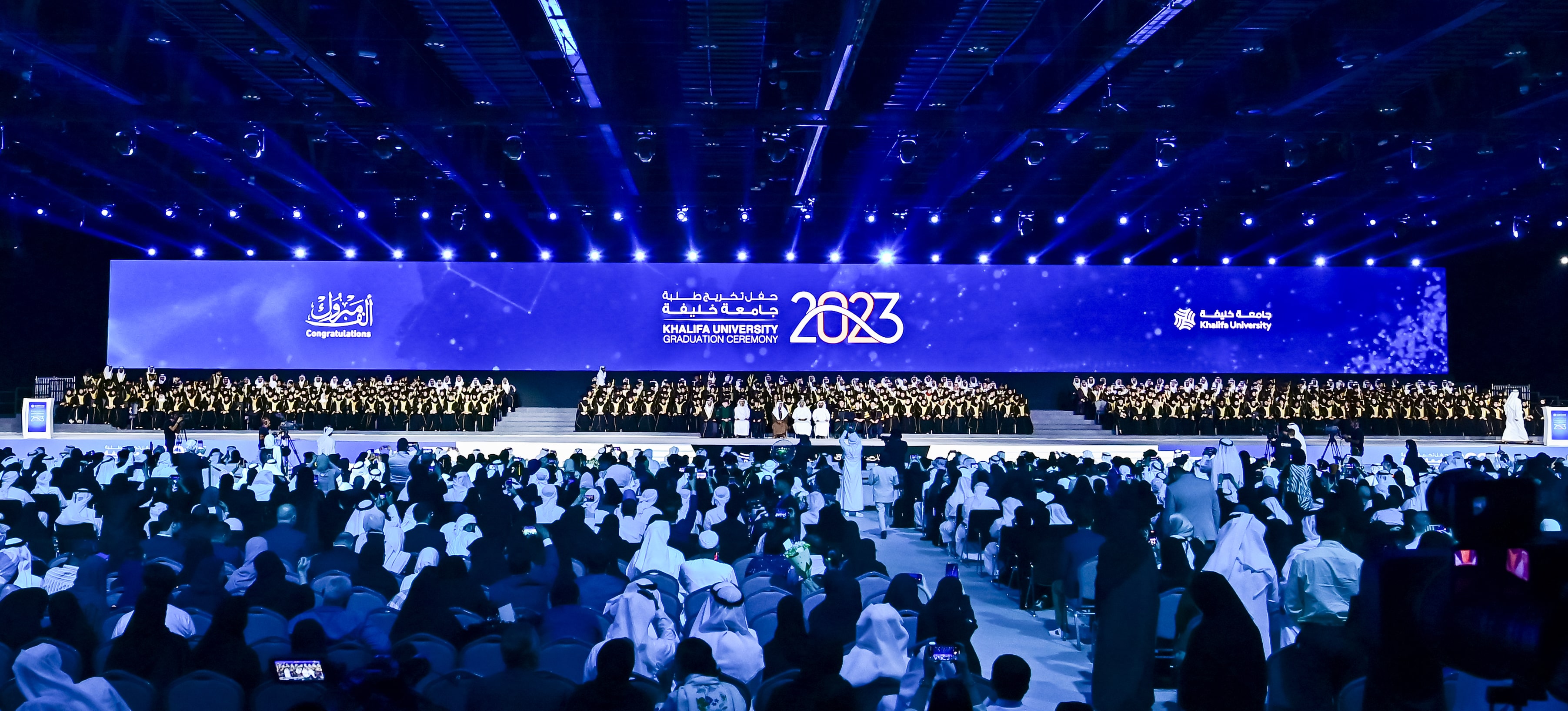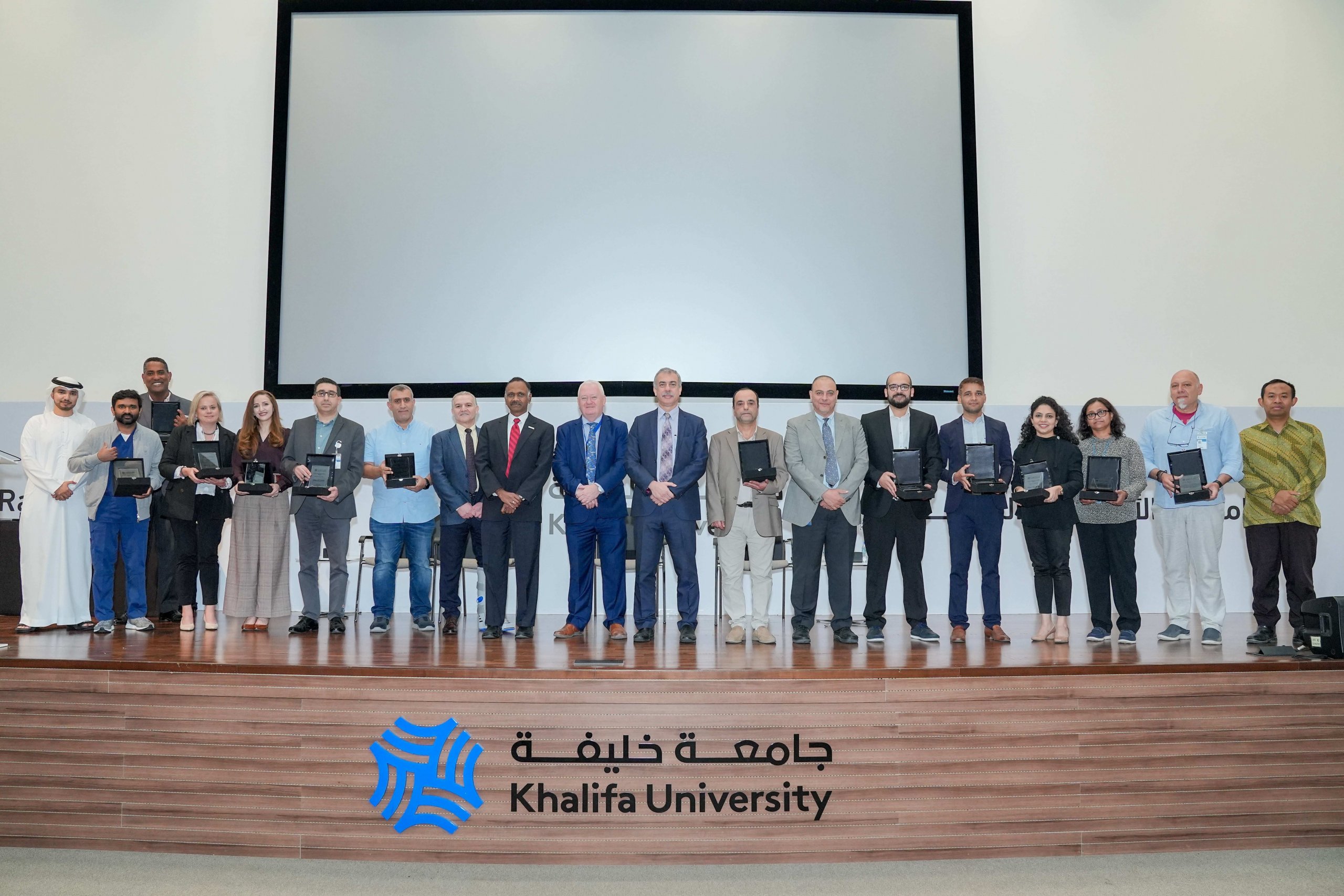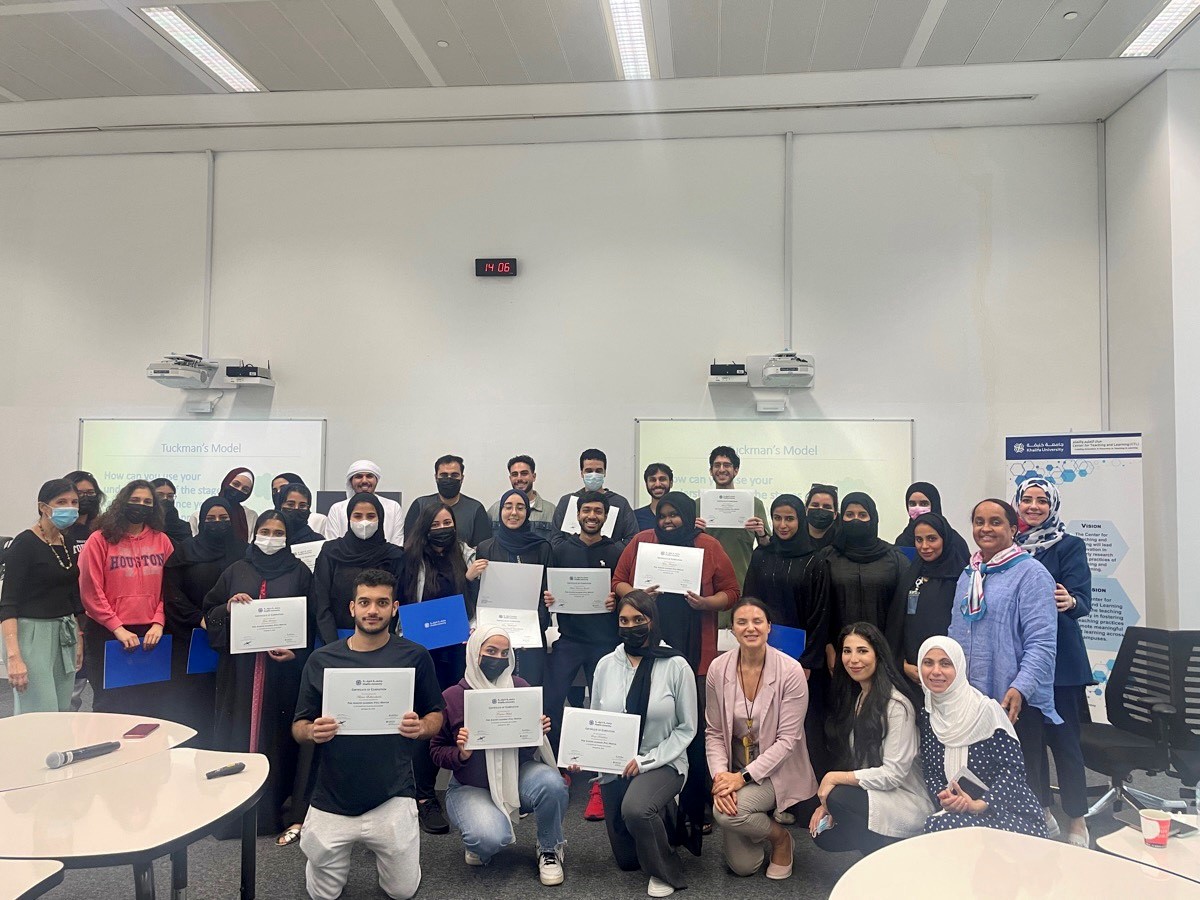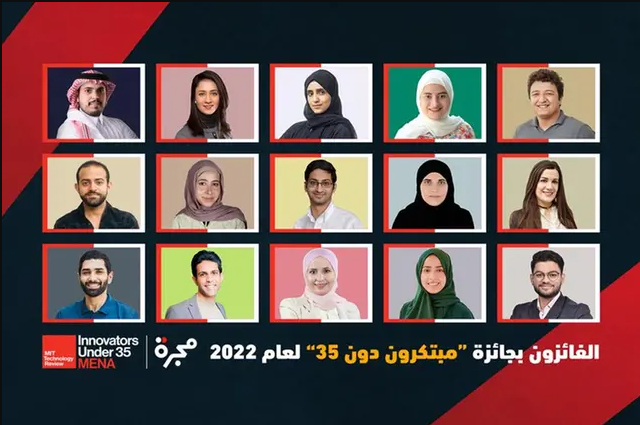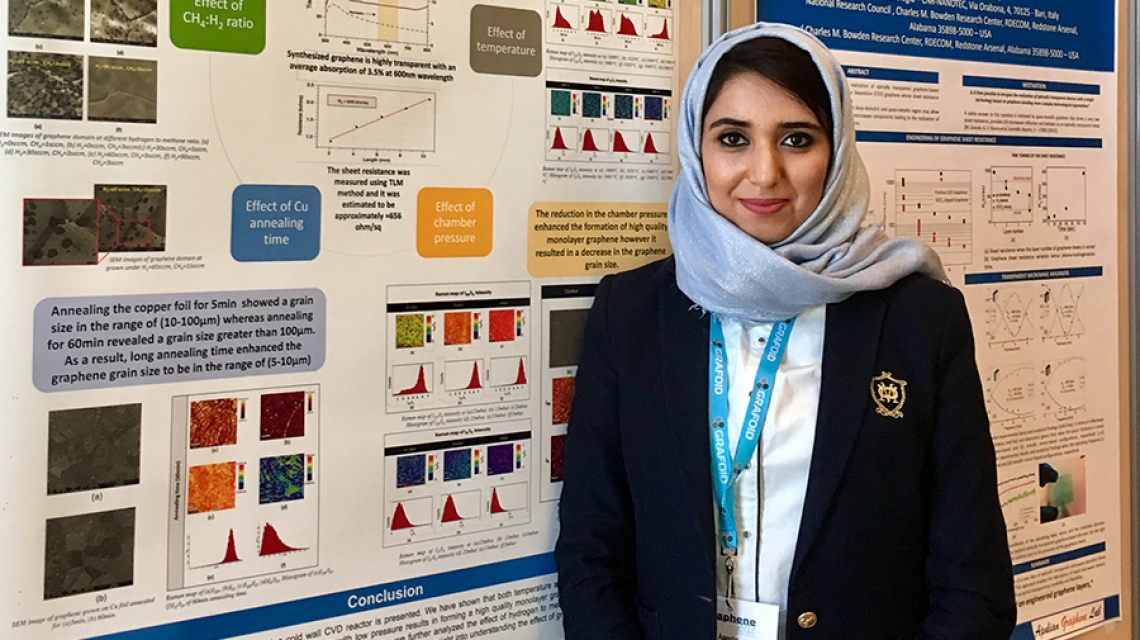
Masdar Institute PhD student Aaesha Alnuaimi has presented her innovative research on the development of low-cost and highly-efficient solar cells at the 2017 Graphene Conference, which was held from 28-31 March in Barcelona, Spain.
Alnuaimi presented a poster on her research, which she co-authored with advisors Dr. Ammar Nayfeh and Dr. Ibraheem Almansouri, titled “Effect of Deposition Parameters for Fast Graphene Growth Using a Cold Wall CVD Reactor.”
Her work explores how to optimize the production of high-quality graphene using chemical vapor deposition (CVD), which is a chemical process used to create a very thin film of graphene. This high-quality graphene would in turn be used as a transparent electrode material in a type of solar cell known as a graphene-on-silicon Schottky junction solar cell, to improve their sunlight-to-electricity conversion efficiencies. The produced graphene could also have potential applications in electronic and optoelectronic devices due to its excellent optical and electrical properties.
Graphene is a one-atom thick sheet of carbon considered as the lightest, strongest, thinnest, and best heat- and electricity-conducting single material ever discovered. It was first isolated in 2004 by researchers at the University of Manchester, and became the world’s first 2D material. Since its discovery, researchers around the globe have been exploring and capitalizing on the wonder material’s unique properties.
“Graphene is a key enabling technology with great potential to support a higher sunlight-to-electricity conversion rate in graphene-on-silicon Schottky junction solar cells,” Alnuaimi shared. “However, the interaction between graphene and silicon at the electrode’s interface must be better understood in order to improve the conversion efficiency and the stability of graphene silicon Schottky junction solar cells.”
Key to her research is finding a way to optimize the growth of high quality graphene, which Alnuaimi has achieved in the state-of-the-art cleanroom facility at Masdar Institute.
The UAE national student discovered that optimizing several parameters of the CVD process, including temperature, chamber pressure, annealing time and hydrogen/methane ratio, has a major impact on the graphene quality.
“The growth of graphene is highly dependent on the deposition parameters. During graphene synthesis, I analyzed the effect of certain deposition parameters, including growth temperature, pressure, methane to hydrogen ratio, and substrate annealing time prior the growth, to produce a high quality monolayer of graphene using the CVD cold wall system in our cleanroom. Our study provides an insight into the effect of growth parameters toward achieving synthesis of high quality monolayer graphene in cold wall CVD reactors,” Alnuaimi explained.
Improving the efficiency of solar cells while significantly reducing the cost of fabricating these high efficiency devices will contribute to making photovoltaic technology more competitive with conventional sources of electricity production, thereby helping to promote the widespread use of photovoltaics in the UAE and beyond.
“Aaesha has conducted a very meticulous and scientific study on the growth of high quality graphene using CVD at the Masdar Institute cleanroom. Her detailed materials analysis and characterization were vital in this achievement. We are very excited that she was able to present this work at one of the preeminent conferences on graphene. Her participation there highlights the Institute’s deep involvement in and commitment to advancing scientific understanding of this important 2D material and its future applications in the energy sector,” said Dr. Nayfeh.
Today there are thousands of research projects being conducted to improve graphene production processes and to discover new applications. The annual Graphene Conference serves as a critical platform for these researchers, who convene once a year to discuss their findings and share important insights. This year marked the seventh edition of the largest European event in graphene and 2D materials and attracted over one thousand attendees.
Alnuaimi enjoyed networking and exchanging information with other researchers and industry experts throughout the four-day conference. While she informed their colleagues about Masdar Institute’s novel graphene-related research activities, she also gained valuable knowledge about other pioneering processes and discoveries taking place across the world – knowledge that will help to further strengthen Masdar Institute’s graphene and advanced materials research.
Erica Solomon
News and Features Writer
5 April 2017



